Crape Myrtles look really bad...help
waltbsc
14 years ago
Related Stories
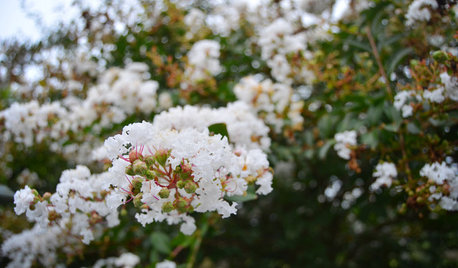
GARDENING GUIDESBrighten Any Garden With White Crape Myrtle
A terrific supporting player to other plants, white crape myrtle can help a walkway or other parts of a landscape gleam
Full Story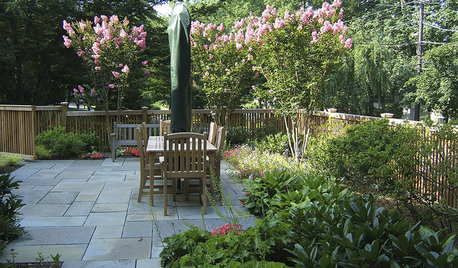
GARDENING GUIDESGreat Design Plant: Crape Myrtle
With long-lasting blooms and gorgeous exfoliating bark, this ornamental tree brings bright color and a unique form to the landscape
Full Story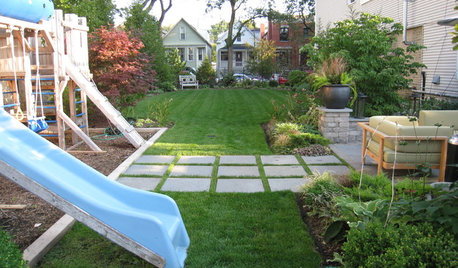
LIFE6 Tips for Teaching Your Kids to Be Good Neighbors
Everyone wins when your children learn to respect boundaries, get help when they need it and show others they care
Full Story
GARDENING GUIDES6 Steps to Creating Your Butterfly Garden
Encourage these fanciful winged beauties to visit your garden while helping restore their fragmented habitat
Full Story
CONTAINER GARDENSContainer Garden Basics: How and When to Water Potted Plants
Confused about soil moisture, the best time to water and what watering device to use? This guide can help
Full Story
PORCHESA Peek at 2 Prettily Dressed Fall Porches
Pumpkins, fall flowers and flea market finds help two Ohio porches get into the seasonal spirit
Full Story
GARDENING GUIDESMake Sure You Read This Before Buying New Plants
Follow these 10 plant-selection tips to avoid buyer’s remorse
Full Story
PETSHouzz Call: Show Us Your Summer-Loving Dog!
Share a photo of your pooch kicking back in the backyard, helping you in the workshop or enjoying your favorite summer getaway
Full Story
GARDENING GUIDESBe Your Own Best Florist With a Bouquet Garden
Shop your backyard for gorgeous floral arrangements — these ideas will help you bring the garden to the table beautifully
Full Story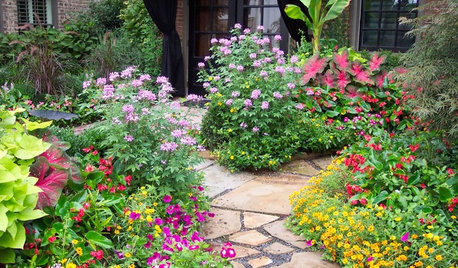
GARDENING GUIDESTexas Gardener: What to Do in June
Don't be discouraged by the dry summer heat — hardy plants, container gardens and smart watering can help landscapes thrive
Full Story0








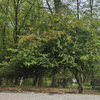

rhizo_1 (North AL) zone 7
gauras
Related Professionals
Pottstown Landscape Contractors · Gresham Landscape Contractors · South Lake Tahoe Landscape Contractors · Wallingford Landscape Contractors · West Haverstraw Landscape Contractors · Maplewood Landscape Contractors · Casselberry Landscape Contractors · Ansonia Landscape Contractors · Fairfax Siding & Exteriors · Lafayette Siding & Exteriors · Lebanon Siding & Exteriors · Pike Creek Valley Siding & Exteriors · Arlington Heights Decks, Patios & Outdoor Enclosures · Overland Park Decks, Patios & Outdoor Enclosures · Genesee Stone, Pavers & ConcreteDan _Staley (5b Sunset 2B AHS 7)
waltbscOriginal Author
rhizo_1 (North AL) zone 7
waltbscOriginal Author
rhizo_1 (North AL) zone 7
Dan _Staley (5b Sunset 2B AHS 7)
gauras
waltbscOriginal Author
Dan _Staley (5b Sunset 2B AHS 7)
waltbscOriginal Author
Dan _Staley (5b Sunset 2B AHS 7)
waltbscOriginal Author
waltbscOriginal Author
freshair2townsquare
rhizo_1 (North AL) zone 7
brandon7 TN_zone7
waltbscOriginal Author
Dan _Staley (5b Sunset 2B AHS 7)
freshair2townsquare
rhizo_1 (North AL) zone 7
plan9fromposhmadison
brandon7 TN_zone7